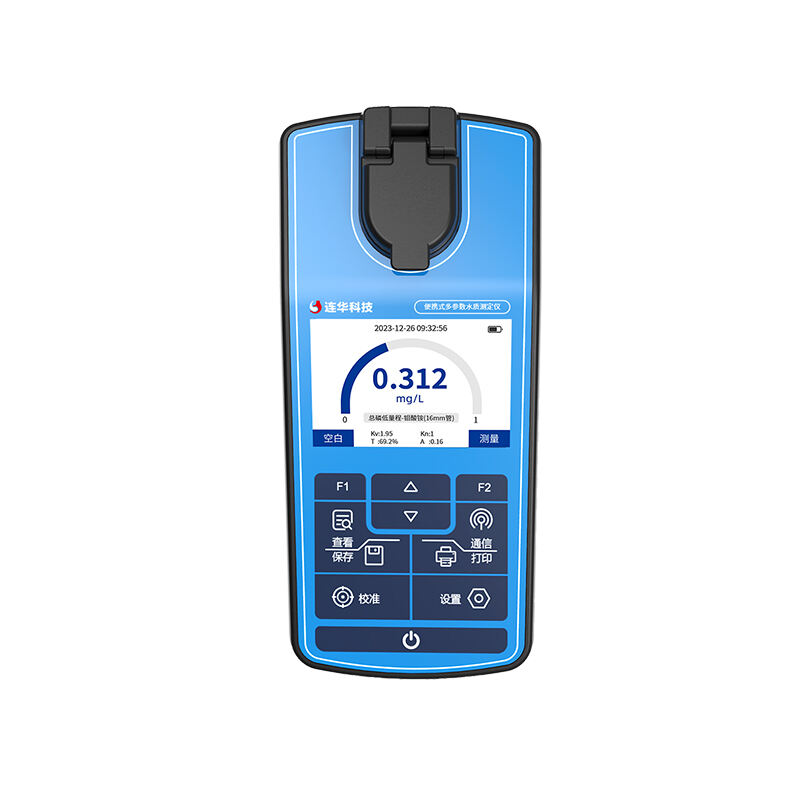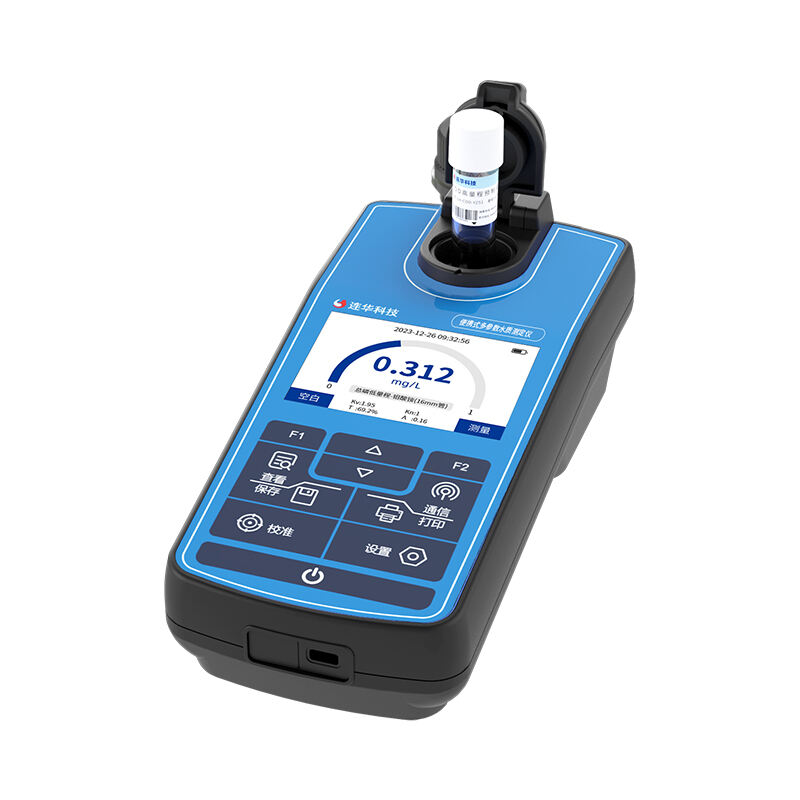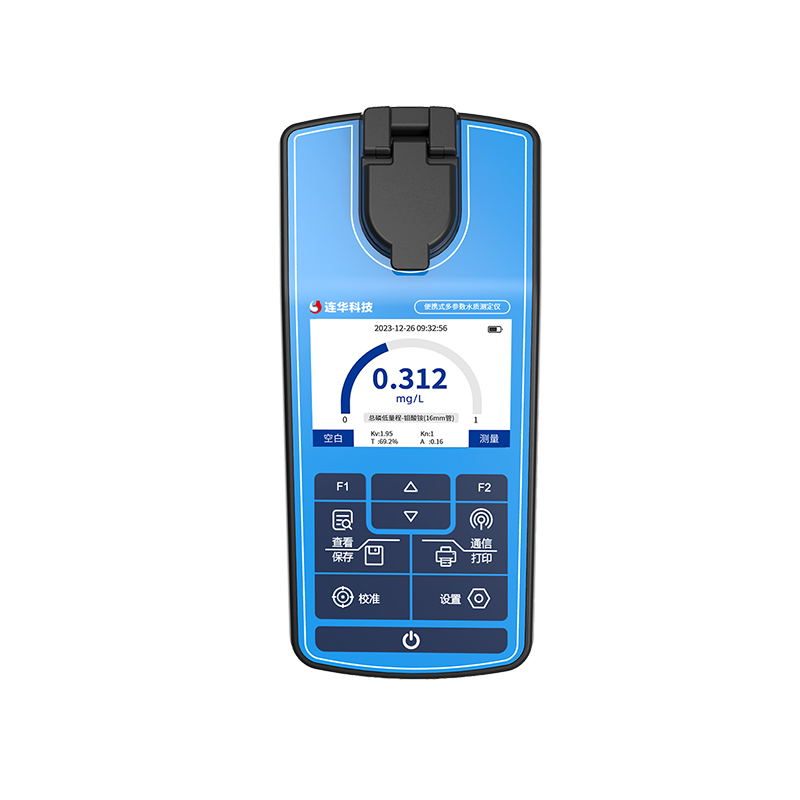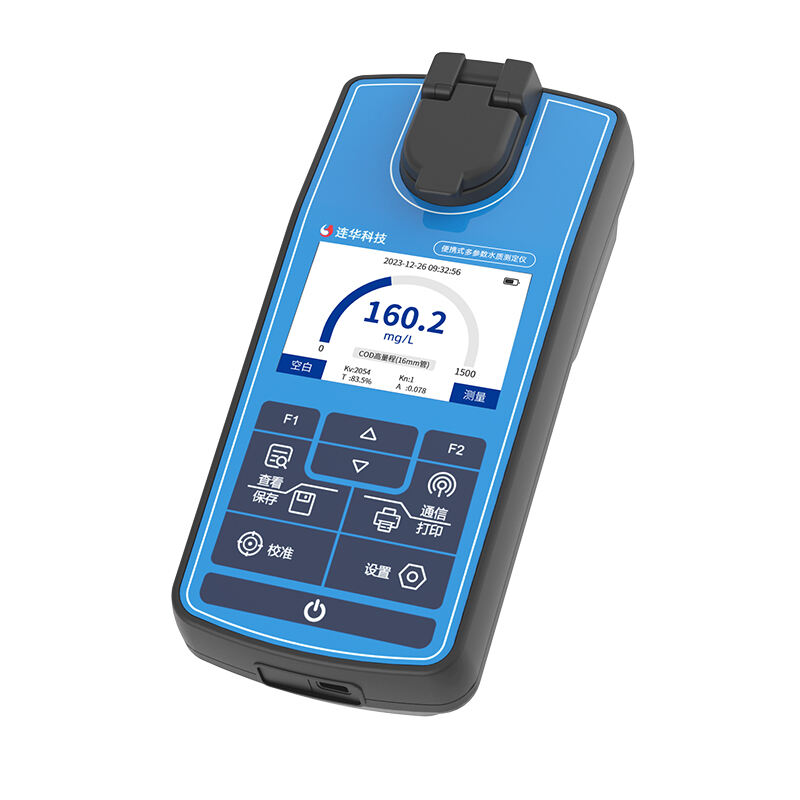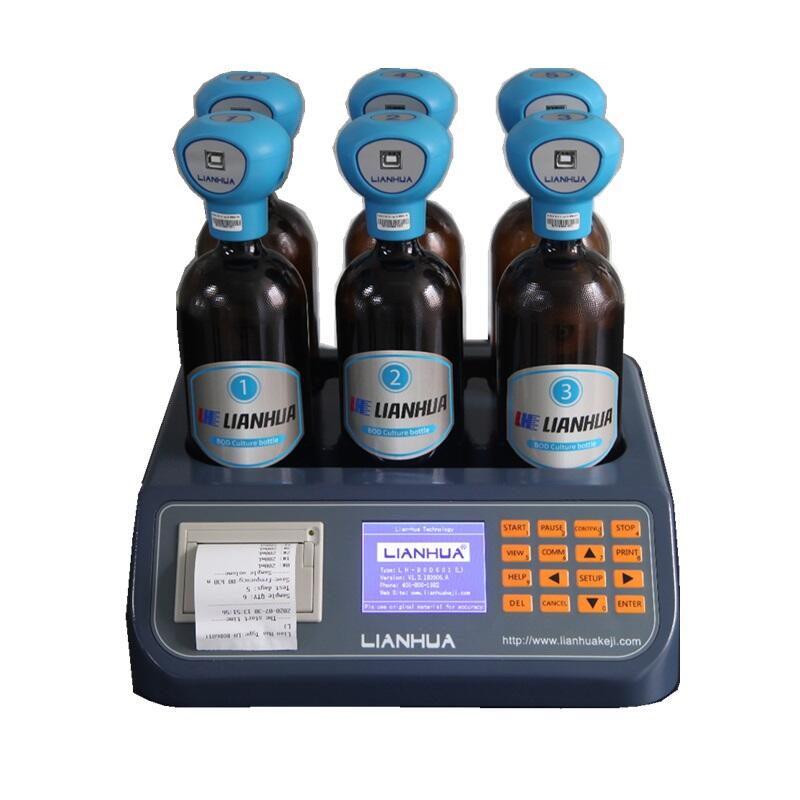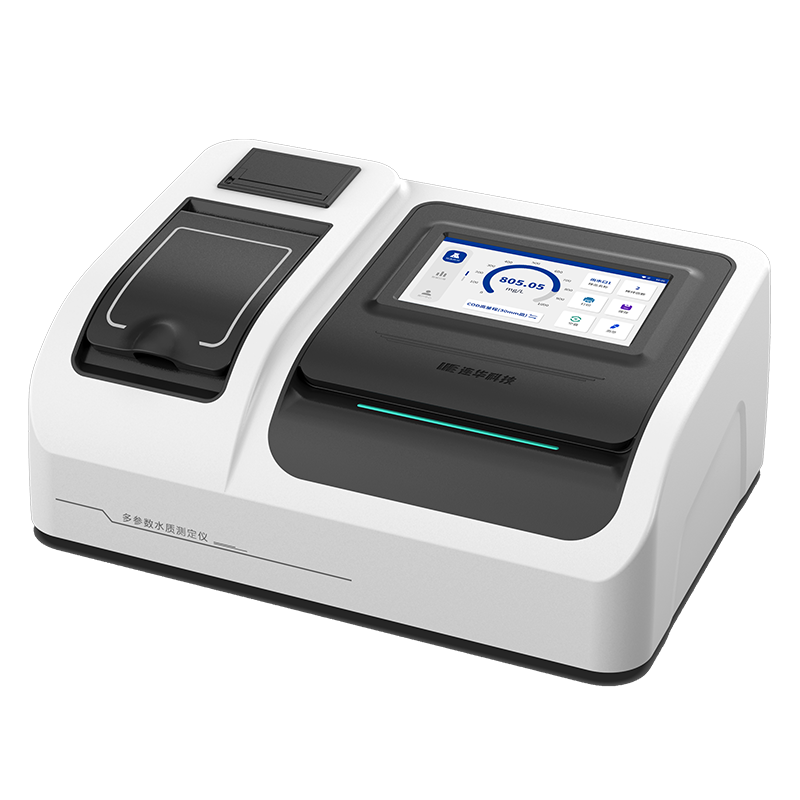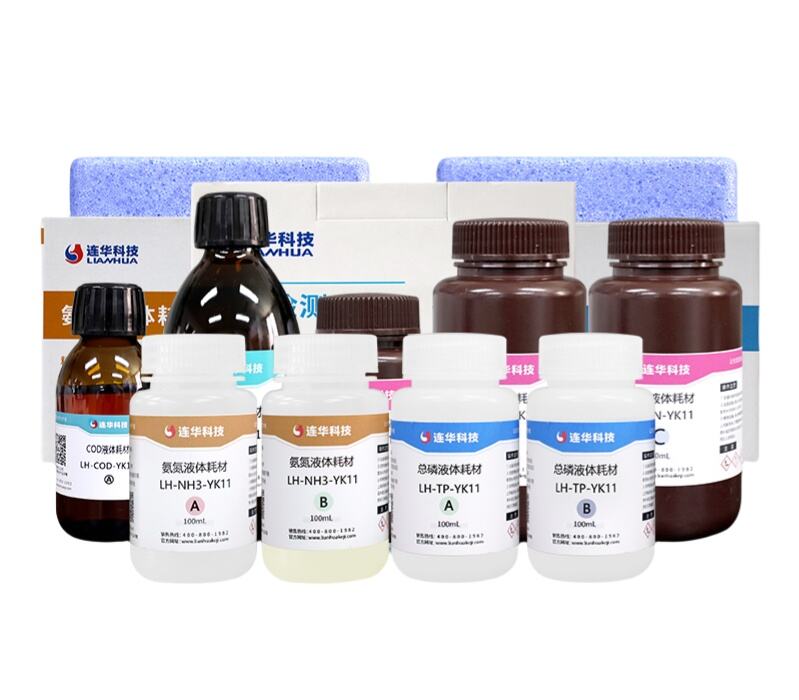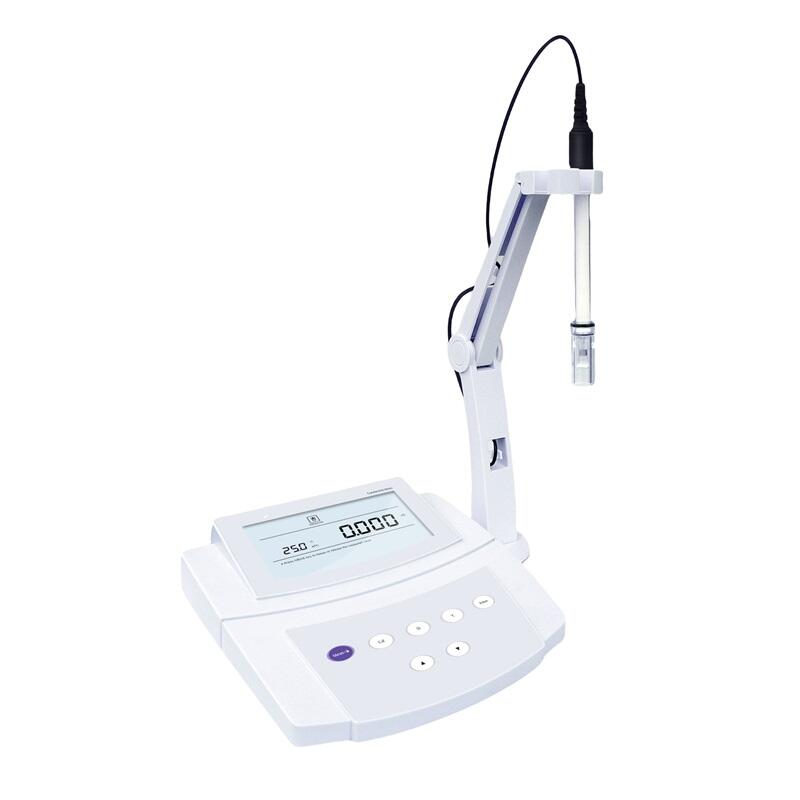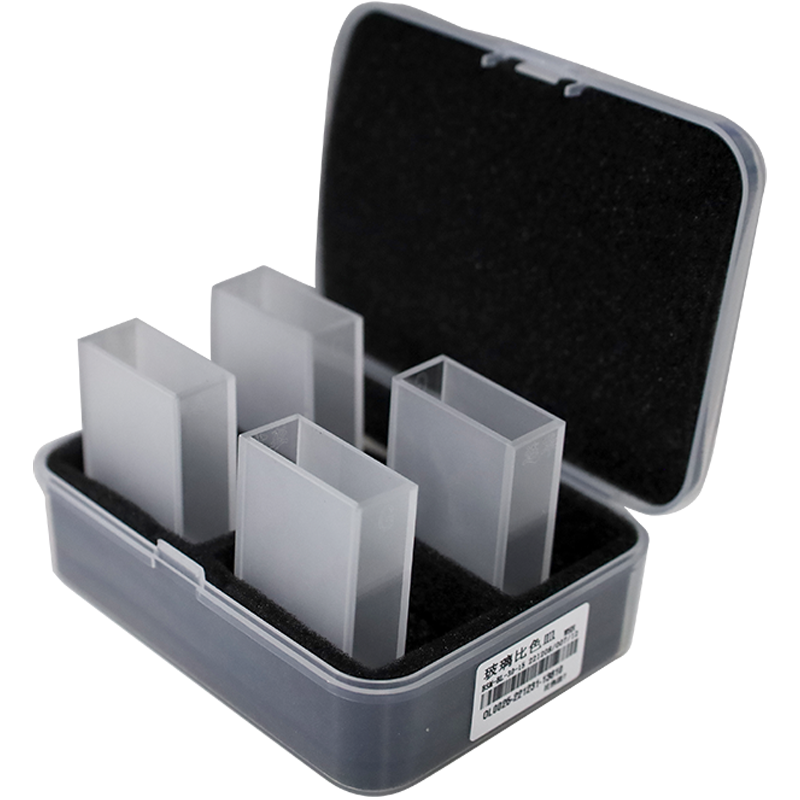Portable multiparameter analyzer for water test LH-P300
LH-P300 is a handheld multi-parameter water quality analyzer. It is battery powered or can be powered by 220V power supply. It can quickly and accurately detect COD, ammonia nitrogen, total phosphorus, total nitrogen, color, suspended solids, turbidity and other indicators in wastewater.
- Overview
- Video
- Specification
- Inquiry
- Related Products
Features
1, The built-in measurement upper limit is displayed intuitively, and the dial displays the detection upper limit value with a red prompt for exceeding the limit.
2, Simple and practical function, efficiently meeting requirement, quick detection of various indicators, and simple operation.
3, The 3.5-inch color screen interface is clear and beautiful, with a dial style UI detection interface and direct concentration reading.
4, New digestion device: 6/9/16/25 wells (optional). And Lithium battery (optional).
5, 180 pcs of built-in curves support calibration production, with rich curves that can be calibrated, suitable for various testing environment
6, Supporting optical calibration, ensuring luminous intensity, improving instrument accuracy and stability, and extending service life
7, Large capacity lithium batteries have a long-lasting endurance, lasting up to 8 hours under comprehensive working condition
8, Standard reagent consumables, simple and reliable experiments, standard configuration of our YK reagent consumables series, easy operation.
Specification
|
Model |
LH-P300 |
|
Measurement indicator |
COD (0-15000mg/L) |
|
Curve number |
180 pcs |
|
Data storage |
40 thousand sets |
|
Accuracy |
COD≤50mg/L,≤±8%;COD>50mg/L,≤±5%;TP≤±8%; other indicator≤10 |
|
Repeatability |
3% |
|
Colorimetric method |
By 16mm/25mm round tube |
|
Resolution ratio |
0.001Abs |
|
Display screen |
3.5-inch colorful LCD display screen |
|
Battery capacity |
Lithium battery 3.7V3000mAh |
|
Charging method |
5W USB-Typec |
|
Printer |
External Bluetooth printer |
|
Host weight |
0.6Kg |
|
Host size |
224×108×78mm |
|
Instrument power |
0.5W |
|
Ambient temperature |
40℃ |
|
Ambient humidity |
≤85%RH (No condensation) |
Other measure indicators
|
indicator |
Analysis method |
Test range (mg/L) |
|
COD |
Rapid digestion spectrophotometry |
0-15000 |
|
Permanganate index |
Potassium permanganate oxidation spectrophotometry |
0.3-5 |
|
Ammonia nitrogen - Nessler's |
Nessler's reagent spectrophotometry |
0-160 (segmented) |
|
Ammonia nitrogen salicylic acid |
Salicylic acid spectrophotometric method |
0.02-50 |
|
Total phosphorus ammonium molybdate |
Ammonium molybdate spectrophotometric method |
0-12 (segmented) |
|
Total phosphorus vanadium molybdenum yellow |
Vanadium molybdenum yellow spectrophotometric method |
2-100 |
|
Total nitrogen |
Color changing acid spectrophotometry |
1-150 |
|
Turbidity |
Formazine spectrophotometric method |
0-400NTU |
|
Color |
Platinum cobalt color series |
0-500Hazen |
|
Suspended solid |
Direct colorimetric method |
0-1000 |
|
Copper |
BCA photometry |
0.02-50 |
|
Iron |
Phenanthroline spectrophotometric method |
0.01-50 |
|
Nickel |
Dimethylglyoxime spectrophotometric method |
0.1-40 |
|
Hexavalent chromium |
Diphenylcarbazide spectrophotometric method |
0.01-10 |
|
Total chromium |
Diphenylcarbazide spectrophotometric method |
0.01-10 |
|
Lead |
Dimethyl phenol orange spectrophotometric method |
0.05-50 |
|
Zinc |
Zinc reagent spectrophotometry |
0.1-10 |
|
Cadmium |
Dithizone spectrophotometric method |
0.1-5 |
|
Manganese |
Potassium periodate spectrophotometric method |
0.01-50 |
|
Silver |
Cadmium reagent 2B spectrophotometric method |
0.01-8 |
|
Antimony (Sb) |
5-Br-PADAP spectrophotometry |
0.05-12 |
|
Cobalt |
5-Chloro-2- (pyridylazo) -1,3-diaminobenzene spectrophotometric method |
0.05-20 |
|
Nitrate nitrogen |
Color changing acid spectrophotometry |
0.05-250 |
|
Nitrite nitrogen |
Nitrogen hydrochloride naphthalene ethylenediamine spectrophotometric method |
0.01-6 |
|
Sulfide |
methylene blue spectrophotometry |
0.02-20 |
|
Sulfate |
Barium chromate spectrophotometric method |
5-2500 |
|
Phosphate |
Ammonium molybdate spectrophotometry |
0-25 |
|
Fluoride |
Fluorine reagent spectrophotometry |
0.01-12 |
|
Cyanide |
Barbituric acid spectrophotometry |
0.004-5 |
|
Free chlorine |
N. N-diethyl-1.4 phenylenediamine spectrophotometric method |
0.1-15 |
|
Total chlorine |
N. N-diethyl-1.4 phenylenediamine spectrophotometric method |
0.1-15 |
|
Chlorine dioxide |
DPD spectrophotometry |
0.1-50 |
|
Ozone |
Indigo spectrophotometry |
0.01-1.25 |
|
Silica |
Silicon molybdenum blue spectrophotometry |
0.05-40 |
|
Formaldehyde |
Acetylacetone spectrophotometric method |
0.05-50 |
|
Aniline |
Naphthyl ethylenediamine hydrochloride azo spectrophotometric method |
0.03-20 |
|
Nitrobenzene |
Determination of total nitro compounds by spectrophotometry |
0.05-25 |
|
Volatile phenol |
4-Aminoantipyrine spectrophotometric method |
0.01-25 |
|
Anionic surfactants |
Methylene blue spectrophotometry |
0.05-20 |
|
Udmh |
Sodium aminoferrocyanide spectrophotometric method |
0.1-20 |
Have something in mind? Let's talk.
Adipiscing elit, sed do eiusmod tempor incididunt ut labore et dolore magna aliqua. Ut enim ad minim.

